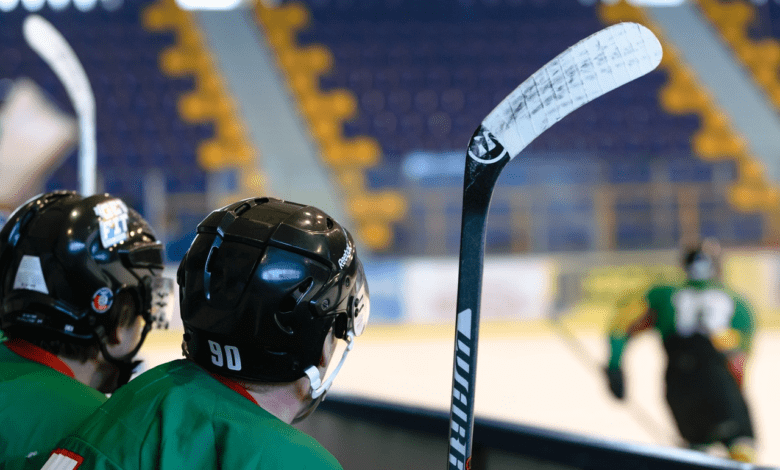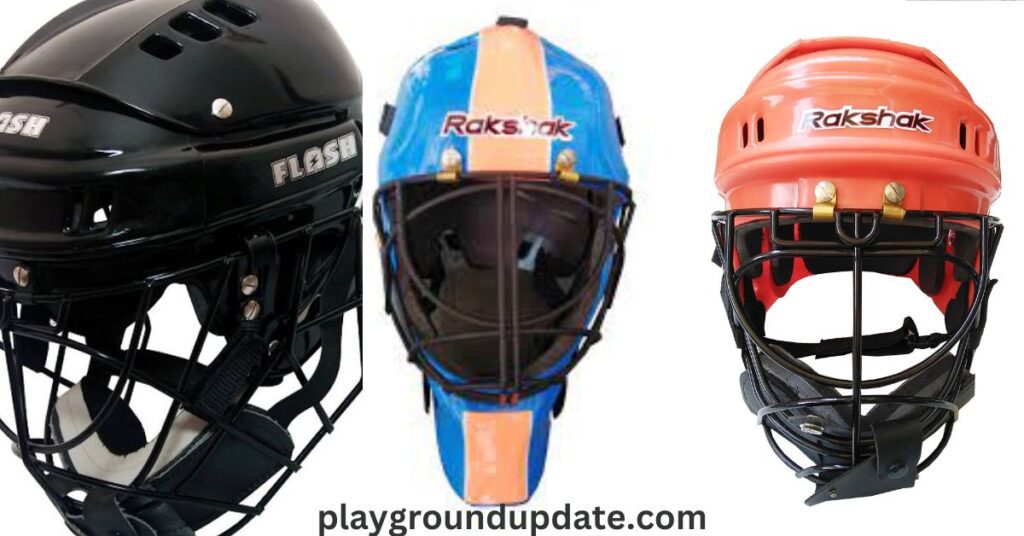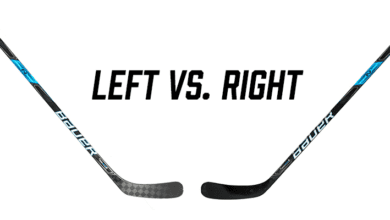How to Find the Perfect Hockey Helmet

When it comes to playing hockey, safety should be your top priority. One essential piece of equipment that ensures your safety on the ice is a reliable hockey helmet. Finding the perfect helmet that fits well and provides adequate protection can be a crucial decision. In this guide, we will outline the key factors to consider when selecting a hockey helmet.
Proper Sizing
A well-fitting helmet is paramount for protection. Follow these steps to determine the right size for your hockey helmet:
a) Measure your head: Use a soft measuring tape and wrap it around the circumference of your head, just above the eyebrows and ears. Record the measurement in inches or centimeters.
b) Consult the sizing chart: Hockey helmet manufacturers usually provide sizing charts that correlate head measurements with helmet sizes. Refer to the chart to find the appropriate helmet size for your measurement.
c) Try it on: Visit a local hockey equipment store and try on different helmet models in your size range. Ensure a snug fit without excessive pressure or discomfort. The helmet should sit level on your head, covering the forehead and the back of your skull.
Safety Certifications
Look for hockey helmets that meet industry safety standards. The two main certification labels to watch for are:
a) HECC (Hockey Equipment Certification Council): HECC certification ensures that the helmet has been tested and meets specific safety standards for hockey.
b) CSA (Canadian Standards Association): CSA certification indicates that the helmet has passed rigorous safety tests and adheres to Canadian safety standards.
When purchasing a hockey helmet, check for these certifications to ensure optimal protection.
Adjustability and Comfort
When choosing a hockey helmet, it’s important to consider factors that contribute to both adjustability and comfort. Here are some key points to keep in mind:
a) Helmet padding: Opt for a helmet that features sufficient padding, preferably made of moisture-wicking materials. The padding not only enhances comfort but also plays a crucial role in absorbing impacts during gameplay. Ensure that the padding is evenly distributed and covers critical areas such as the sides and the back of the head.
b) Chin strap: The chin strap is responsible for keeping the helmet securely in place. Look for a helmet with an adjustable chin strap that can be easily tightened or loosened. It should fit comfortably under your chin without causing irritation or discomfort. The strap should also be durable and reliable to withstand regular use.
c) Ventilation: Adequate ventilation is essential to keep you cool and comfortable on the ice. Look for helmets with vents or airflow channels that promote air circulation. Proper ventilation helps prevent excessive sweating and keeps your head dry during intense play. This feature becomes particularly important during longer games or practice sessions.
d) Fit system: Many modern hockey helmets offer adjustable fit systems that allow you to customize the fit according to your head shape. These systems typically involve an adjustable dial or mechanism at the back of the helmet, which can be tightened or loosened to achieve a secure and comfortable fit. Ensure that the fit system is easy to use and provides a snug fit without feeling too tight or too loose.
e) Ear protection: Some helmets come with removable or adjustable ear pads. These pads can offer additional comfort and protection, especially if you prefer a more personalized fit. Additionally, they can help reduce the risk of ear injuries during gameplay. Consider whether you prefer helmets with or without removable ear pads based on your personal preferences and needs.
f) Weight: The weight of the helmet can also impact comfort, especially during longer periods of play. Look for helmets that are lightweight without compromising safety. Lighter helmets are generally more comfortable to wear and can reduce strain on your neck and shoulders.
Remember, comfort is subjective, and what works for one person may not work for another. It’s crucial to try on different helmets and assess their comfort level before making a final decision. Visit a local hockey equipment store and spend some time wearing different models to gauge how well they fit and feel on your head.
By prioritizing adjustability and comfort, you can find a hockey helmet that not only offers excellent protection but also ensures a pleasant and comfortable experience on the ice.

Additional Features
While not essential, certain features can enhance your overall experience and convenience:
a) Cage or visor compatibility: If required, ensure that the helmet is designed to accommodate a cage or visor, allowing you to protect your face while playing.
b) Customization options: Some helmets offer customizable features such as removable ear pads, different color options, or personalized stickers. These extras can add a touch of individuality to your gear.
Selecting the perfect hockey helmet requires careful consideration of various factors to ensure both safety and comfort during gameplay. Here’s a recap of the key points to remember:
- Proper sizing: Measure your head accurately and refer to the manufacturer’s sizing chart to find the right helmet size for a snug and secure fit.
- Safety certifications: Look for helmets that are certified by reputable organizations such as HECC and CSA, ensuring that they meet industry safety standards.
- Adjustability and comfort: Choose a helmet with sufficient padding, an adjustable chin strap, ventilation for airflow, an adjustable fit system, and optional features like removable ear pads.
- Additional features: Consider whether you need a helmet that accommodates a cage or visor, and check for customization options that allow you to personalize your gear.
Conclusion
Remember to consult with professionals or experienced staff at a hockey equipment store for personalized advice and assistance in finding the ideal helmet for your specific needs. They can help you make an informed decision based on your preferences, budget, and playing style.
Investing in a high-quality helmet is crucial for your safety on the ice. It’s worth considering the long-term benefits and peace of mind that come with a well-fitted, certified helmet.
Always prioritize safety and stay updated on the latest advancements in hockey helmet technology. Regularly inspect your helmet for any signs of wear and replace it if necessary.
By following these guidelines and prioritizing both safety and comfort, you can find the perfect hockey helmet that not only protects you but also enhances your performance and enjoyment of the game. Stay safe, have fun, and enjoy playing hockey!
Frequently Asked Questions (FAQs)
Here are some commonly asked questions about finding the perfect hockey helmet:
Q1: How do I determine the correct size for a hockey helmet?
A: To find the right size, measure the circumference of your head just above the eyebrows and ears. Refer to the manufacturer’s sizing chart to match your measurement with the appropriate helmet size.
Q2: What safety certifications should I look for in a hockey helmet?
A: Look for helmets certified by organizations such as HECC (Hockey Equipment Certification Council) and CSA (Canadian Standards Association). These certifications ensure that the helmet meets specific safety standards for hockey.
Q3: How important is adjustability in a hockey helmet?
A: Adjustability is crucial for achieving a proper fit and ensuring comfort. Look for helmets with adjustable features such as chin straps, fit systems, and removable ear pads, allowing you to customize the fit to your liking.
Q4: Why is ventilation important in a hockey helmet?
A: Ventilation helps promote airflow and regulate temperature, keeping your head cool and reducing sweat accumulation during gameplay. Proper ventilation enhances comfort, especially during intense or extended periods of play.
Q5: Should I consider additional features like cage or visor compatibility?
A: If you require facial protection, opt for a helmet that is designed to accommodate a cage or visor. This extra feature adds an additional layer of safety by protecting your face from potential impacts.
Q6: Can I personalize my hockey helmet?
A: Some helmets offer customization options such as removable ear pads, different color choices, or the ability to add personalized stickers. These features allow you to add a touch of individuality to your gear.
Q7: How often should I replace my hockey helmet?
A: It is recommended to replace your hockey helmet every few years or if it has been subjected to a significant impact. Regularly inspect your helmet for signs of wear and tear, and follow the manufacturer’s guidelines for helmet lifespan.
Remember, these FAQs are general guidelines, and it’s always best to consult with professionals or knowledgeable staff for specific advice based on your needs and requirements. Prioritize safety and choose a hockey helmet that provides a comfortable and secure fit for an enjoyable and protected playing experience.
Also Read
How to Select the Right Hockey Stick






3 Comments